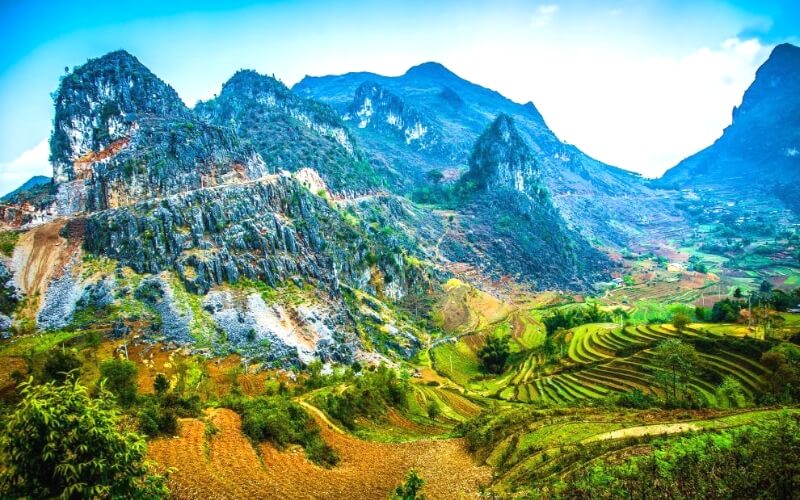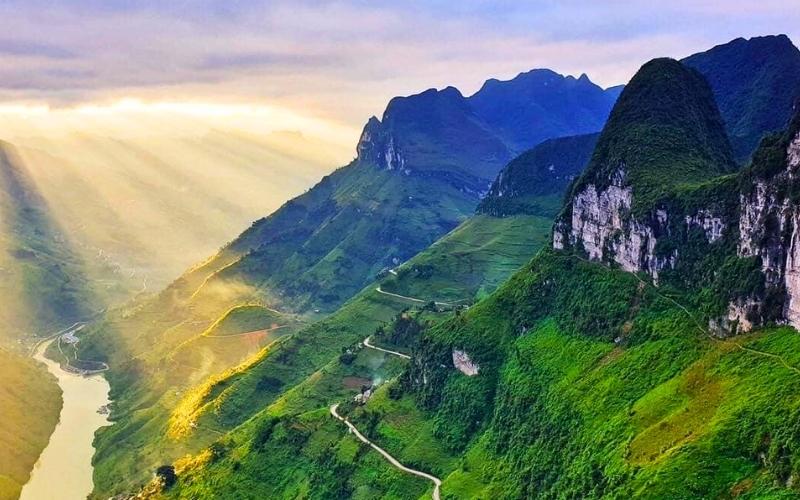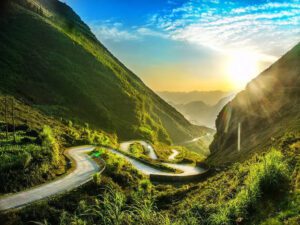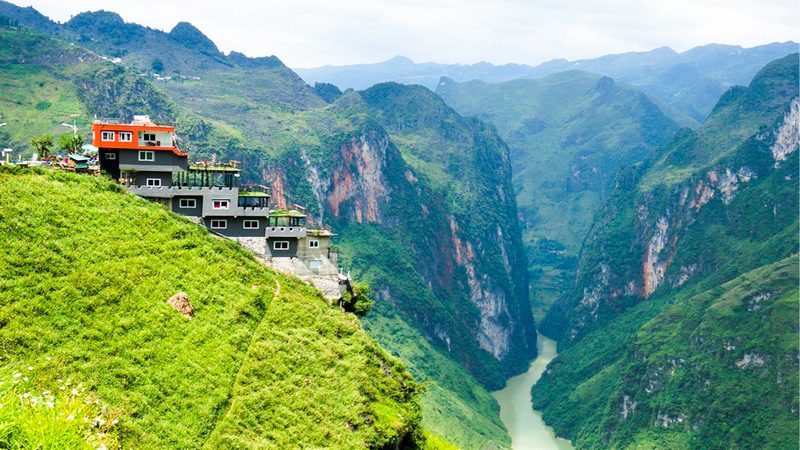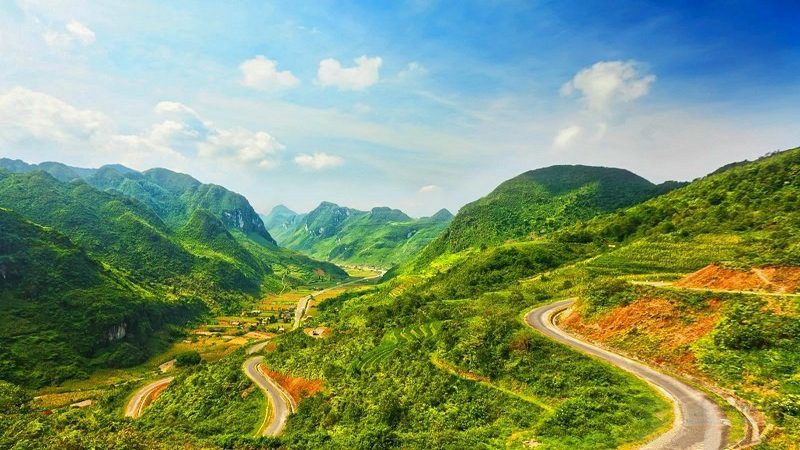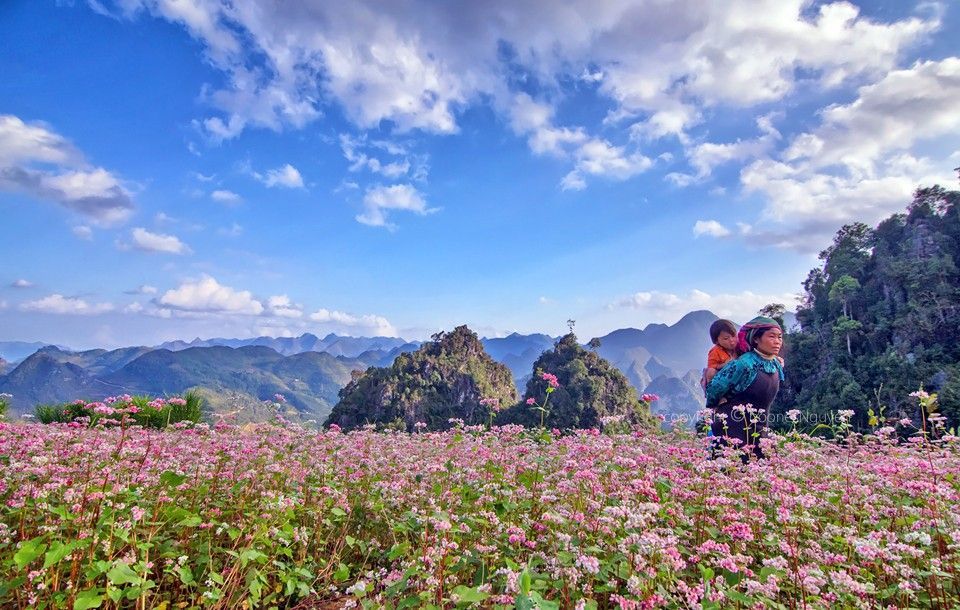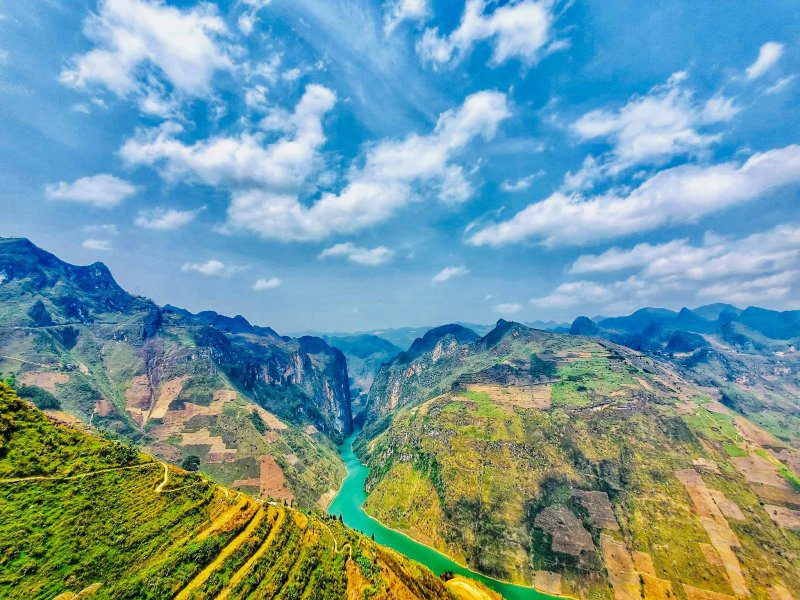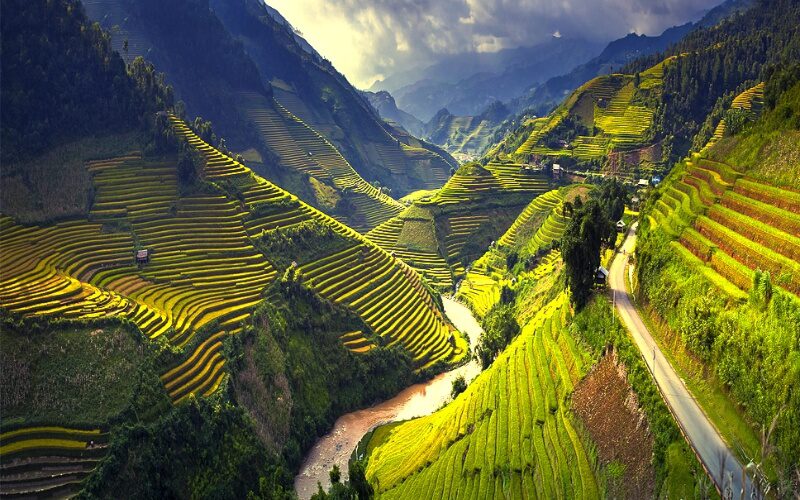Ha Giang is located at the highest altitude in Vietnam, 300 km from Hanoi, surrounded by the provinces of Cao Bang, Tuyen Quang, Lao Cai, and Yen Bai. In the north, it has a long border with China. It has a singular and breathtaking relief thanks to its massif of high limestone mountains. Numerous ethnic minorities, like the Dao, H’mong, Tay, and Nung, who still practice their traditional ways, call this region home.
General Information
In the far north of Vietnam, in the province of Ha Giang, are mountains. Beautiful karst plateaus, breathtaking rice terraces, mind-blowing passes, genuine ethnic villages, and rich cultural heritage are all well-known features of this province.
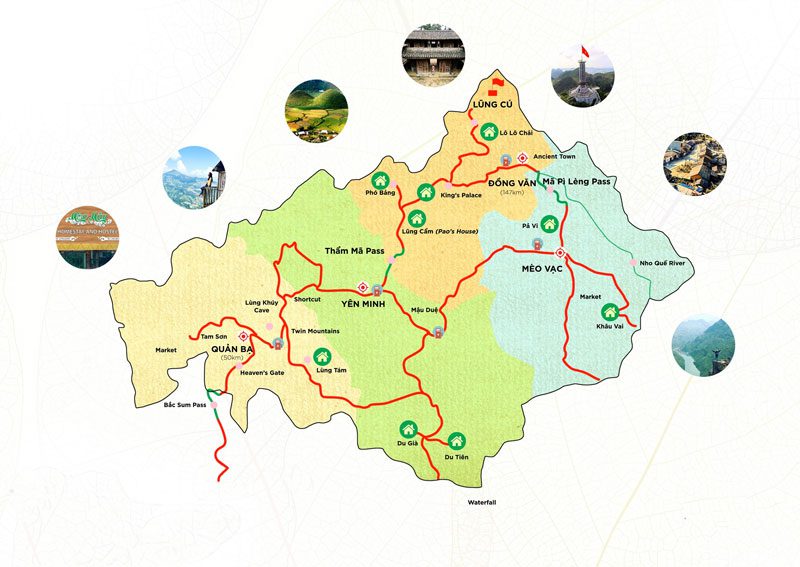
Ha Giang map
This region is still untouched by commercial tourism. Ha Giang is a great choice if you’re looking for somewhere that is less crowded and touristy than Sapa. A visit to Ha Giang will relieve all of your stress and provide you with life-enriching opportunities to experience the distinctive nature and culture of this area. Given that the road infrastructure has been repaired and is now open to all tourists, traveling to this province is much simpler today.
Ha Giang Weather & Best Time to Visit
Depending on what you want to do, you should decide when to go to Ha Giang. However, due to the moderate weather, it is often recommended to plan your Ha Giang tour between the months of February and April. It’s substantially warmer from April through September. The time from December to February has a maximum temperature of 16°C and is the coldest time of the year.
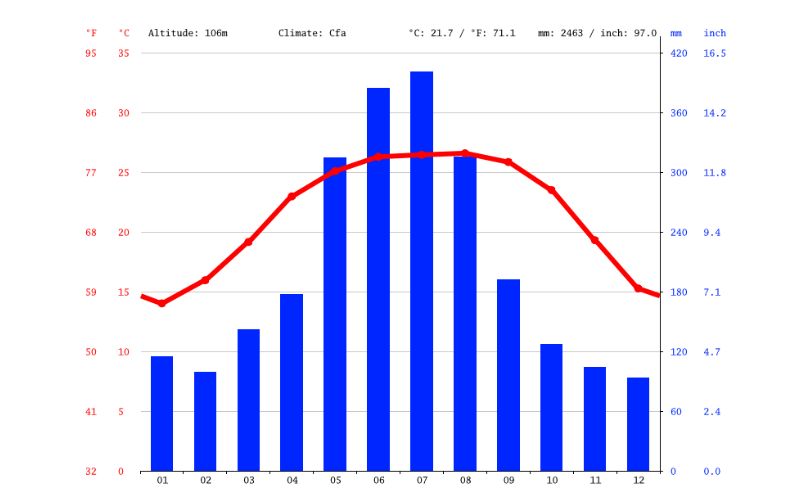
Ha Giang weather
In the rice terraces, the season for transplanting rice starts in May. In order to save water, farmers plow their land and raise the edges. The terraces get wet between May and June, and mirrors with the sky reflected in them start to form.
It is harvest time from September until October. When that happens, the rice fields turn a stunning shade of golden. For fans of photography, it is one of the liveliest and most enchanting times of the year. A beautiful transition from green to yellow is also something we notice.
When the buckwheat flowers bloom in Ha Giang from October to November, you can go there to observe them.
How to get to and around Ha Giang
By car or by bus
From Hanoi, you can board a bus during the day or at night at a number of bus stops, including My Dinh, Giap Bat, Gia Lam, and Old Quarter. The trip takes about 6 to 7 hours to complete and is quite long (more than 300 km). You can get in touch with us if you want to rent a private vehicle. To help you get the most out of your trip, IDC Travel provides you with a car rental service with a driver. Before you depart, the price and vehicle quality are agreed upon. You can also travel to Ha Giang from several northern hilly regions. For illustration:
- Sapa-Ha Giang: 245km. Duration: 6h
- Yen bai – Ha Giang: 310km. Duration: 7h30
- Bac Kan – Ha Giang: 245km. Duration: 6h45
- Cao Bang-Ha Giang: 240km. Duration: 7h45
By motorcycle
Rent a motorcycle to get to Ha Giang if you enjoy freedom and adventure. However, it is not recommended because Ha Giang’s roads, particularly for foreigners, are extremely dangerous and there are several accidents every year.
By bike
For a short trip, the bicycle is an excellent mode of transportation. There are places to hire bikes, so you may explore the ancient town at your own pace. This service is also offered by some homestays.
By taxi
In Ha Giang, there are three major taxi companies: Taxi Truong Xuan, Taxi Cong Hoang, and Taxi Son Dan.
Places to Visit in Ha Giang
Dong Van Karst Plateau
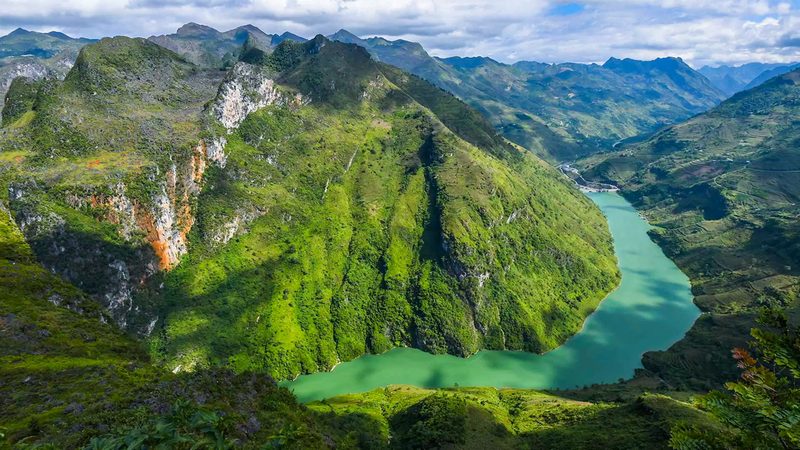
Ha Giang – Dong Van Karst Global Geopark
Dong Van Karst Plateau, which spans 574 km2, is impressive and includes the districts of Quang Ba, Meo Vac, Yen Minh, and Dong Van. It is the largest karst plateau in Vietnam and is positioned at a height of 1,024 m. A UNESCO World Heritage Geological Park is located on the plateau. It has been there for 500 million years. On the plateau, there is a market that is open every Sunday and holiday where ethnic minorities can interact and trade items.
It is a photographer’s heaven. You can escape the heat by traversing the plateau. The temperature will decrease as you ascend.
The rainy season, which lasts from May to October, and the dry season, which lasts from November to April, both occur on the plateau. The buckwheat flowering season, which lasts from October to April, makes the plateau even more gorgeous. Flowers with a mustard color flourish in the valleys.
Dong Van Old Quarter
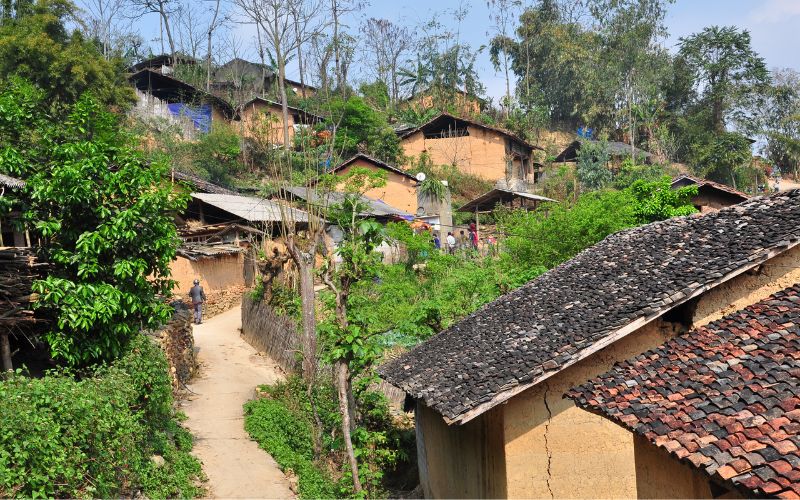
Dong Van Old Quarter
Only about forty dwellings make up the old quarter of Dong Van, which is only 40 kilometers from Ha Giang in a valley of the Dong Van plateau. Chinese-style homes frequently have two floors and Ying-Yang tiled roofs. Ironwood was used to build the homes. Mountains made of karst surround the city. Chinese ethnic minorities including the Hoa, Hmong, Tay, and Kinh have lived together for a while in Dong Van’s historic area. Dong Van, incidentally, means “sharing culture” place.
Quan Ba Twin Mountains

Quan Ba Twin Mountains
Quan Ba Twin Mountains should not be missed when visiting Ha Giang. The captivating splendor of the surroundings will astound you. Green rice fields at the base of the mountains resemble the attractive spring’s green clothing. Ripe rice turns a honey-yellow color in the fall. The Quan Ba Twin Mountains, which are located in the valley’s center, provide appeal to the area. Additionally, the twin mountain’s love story, which is infused with poetic purpose, conveys both the location’s renowned beauty and its inhabitants’ real lives. Quan Ba Twin Mountains is thus a popular tourist site and a representation of Ha Giang.
Ma Pi Leng Pass
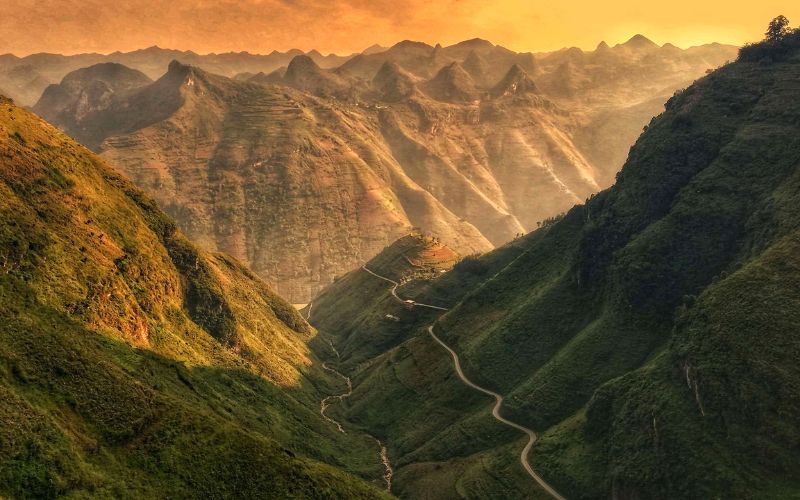
Ma Pi Leng Pass
In northern Vietnam, it is one of the four highest passes. Meaning “horse nose,” Ma Pi Leng. As you ascend the pass, you will be able to take in the breathtaking valleys, hemp fields, and stilt homes of the local minority ethnic groups as well as a comprehensive perspective of the entire geological karst plateau and the breathtaking surroundings.
Hmong King’s Palace
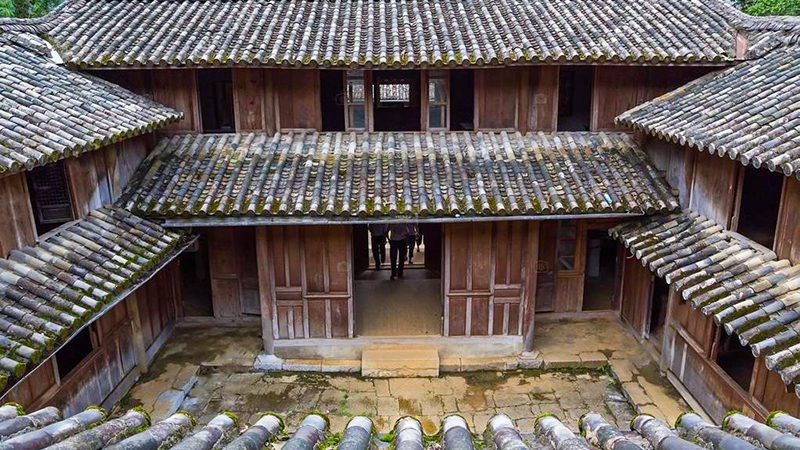
Hmong King’s Palace in Ha Giang
This is located on the plateaus of Dong Van and Meo Vac, around 12 miles from Dong Van. The palace mimics Chinese design. The palace is 1120m2 in size and was constructed by ethnic minorities. This palace, which forms the letter (which in English means “king”), was constructed around the start of the 20th century. You ought to be aware that the Vuong family ruled the entire Dong Van plateau before Vuong Chinh Duc declared himself king. The palace is recognized as a national treasure.
Lung Cu Flag tower
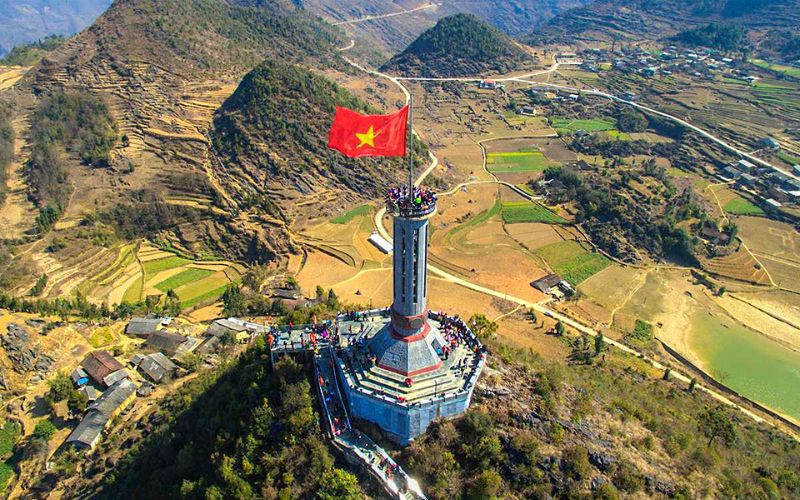
Lung Cu Flag tower
The massive Lung Cu Tower, a historical artifact and revered emblem of national sovereignty, is perched atop Rong or Long Son Mountain. A panoramic view of a stunning environment with mountains, rice fields, lakes, homes with dark gray roofs, and borders can be seen from this location, which is perched at a height of around 1700 meters above sea level.
The tower, which is almost 35 m tall, is draped with a 54 m2 flag that represents 54 members of the vast Vietnamese family. The octagonal pedestal displays reliefs modeled by bronze drums from the Dong Son culture of the nation’s founders, as well as cultural practices of the Ha Giang ethnic groups and historical references. Visitors will be able to get a glimpse of the cultural practices of the many Ha Giang ethnic groups through exhibits of artifacts, clothing, and tools in the exhibition hall at the base of the tower.
Hoang Su Phi and the rice terraces
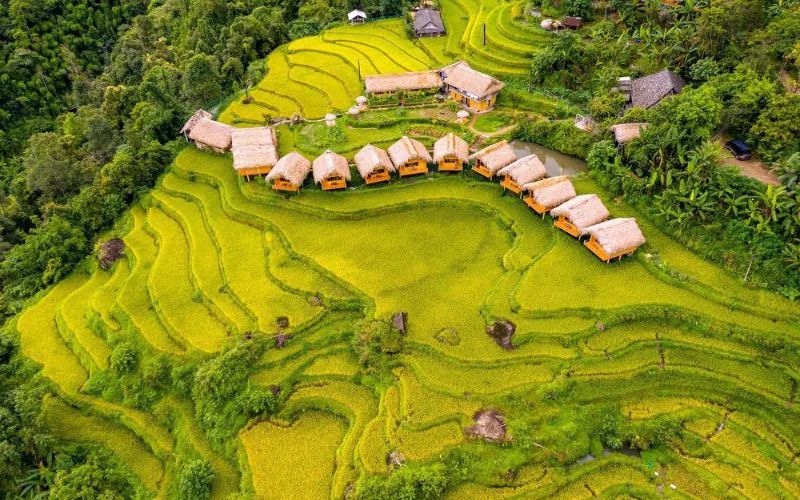
Hoang Su Phi
The magnificent Hoang Su Phi rice terraces, which were designated as national treasures in 2012, are an absolute must-see when visiting Ha Giang, Vietnam. When rice is being transplanted in May, the rice fields in Hoang Su Phi that spread as far as the eye can reach in the Xin Man Valley are very beautiful to watch. These murals on the mountainside change color as the rice plants mature: The enormous water mirrors are filled with rice plants, which pass through a light green cover in June and turn yellow in September before harvest.
Nho Que River Valley
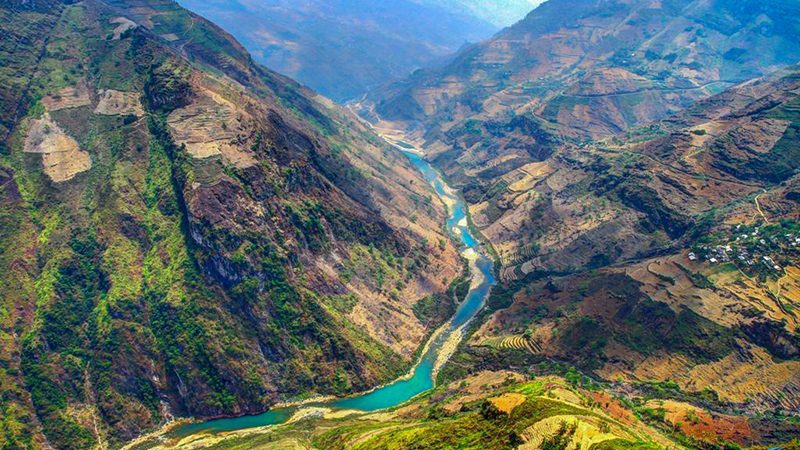
Nho Que River
The Nho Que River Valley is one of Vietnam’s most distinctive geological valleys and is regarded as one of Southeast Asia’s deepest canyons due to its exceptionally rough topography. The green Nho Que River can be seen meandering down the mountainside as we stand on top of Ma Pi Leng Pass and look into the distance. We can also experience the majesty of nature. The Nho Que River appears to be a pale blue silk stripe across the gorgeous mountain from a distance. You now only need to relax and take in this land’s breathtaking beauty.
Noong Lake
Tourists love this 100-ha natural lake that is encircled by forest. It is a freshwater lake that is compared to El Dorado because of the forest of trees that float in the water there. In the lake, there is a wide variety of fish. You will be astounded by nature’s magnificent display.
Meo Vac Village
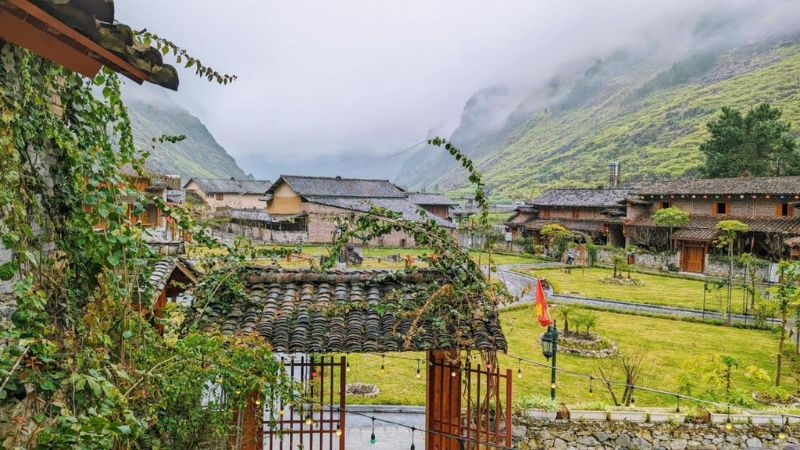
Meo Vac Village
Meo Vac is a charming little town encircled by towering karst mountains, and like many other communities in the northwest, it frequently hosts ethnic minorities. The main draw is the journey across the breathtaking Mai Pi Leng Pass, which spirals 22 kilometers from Dong Van. Mountains made of limestone make up much of the landscape. The majority of visitors come to Meo Vac to do trekking, enjoy the rural setting, and observe local culture.
Things to do in Ha Giang
Trek in the mountains
Hiking is especially ideal due to the hilly relief and stunning scenery. The province of Ha Giang boasts a variety of hiking opportunities, from short strolls to multi-day treks that include overnight stays. Trekking in Ha Giang offers a one-of-a-kind chance to see mountain communities and view breathtaking vistas from a different perspective.
Stay with the locals
It is a journey that will provide you with priceless memories of your time in Vietnam. Even though the living conditions may be subpar, staying with the locals offers a wonderful opportunity for camaraderie and sharing with the community. Locals, who are frequently members of ethnic minorities, will welcome you into their lovely traditional wooden homes. It is also a chance to support local businesses and promote ethical, cooperative travel.
Discover the markets
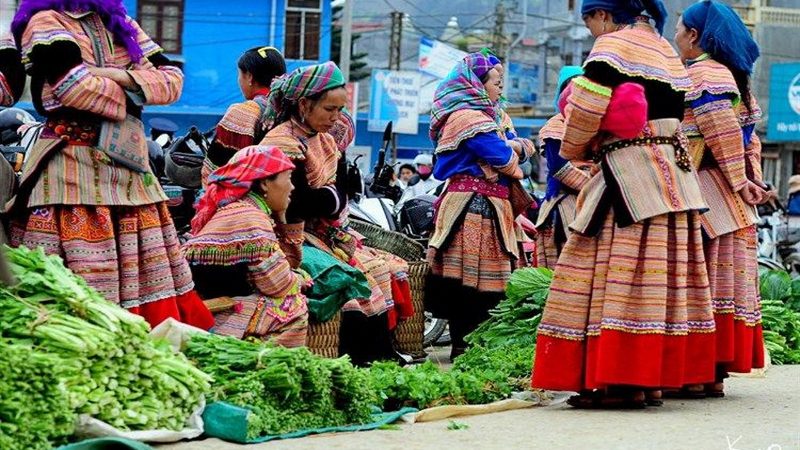
Meo Vac Market
Visit one of the many ethnic markets in the province of Ha Giang to encounter this amazing ethnic mosaic; you’ll definitely experience a change of scenery! The women are gorgeously attired in their traditional clothes in glistening colors, making the aisles of the market an even more vibrant festival of color. The most significant markets in the province that draw numerous members of ethnic minorities are those that are conducted on Sunday mornings in Hoang Su Phi, Dong Van, and Meo Vac. Be aware that the “love market” is conducted in the village of Khau Vai just once a year, according to the lunar calendar. Do not miss it!
Admire the rice terraces
As mentioned above, The Hoang Su Phi Rice Terraces are a true work of art created by one person. The sight of its rice terrace amphitheaters never dissatisfies a traveler. Only between May and October is when the rice is planted when it ripens, and then during the harvest, which occurs at the end of September and the beginning of October.
Food to eat in Ha Giang
Banh tam giac mach (buckwheat cake)
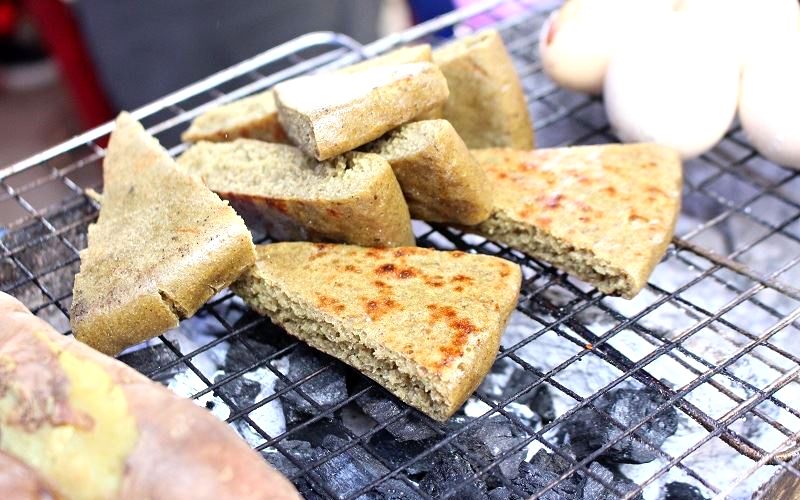
Buckwheat cake
The limestone plateau of Ha Giang dons its magnificent pink and purple mantle made of buckwheat blossoms in the middle of October. The ability of the locals to use this particular flower allows for the creation of a cake that is incredibly nutritious and wholesome. The cooks gather the plant’s seeds and grind them with water until the mixture is completely bonded. The dough is next placed into tiny molds before being heated. The outcome is cakes that can be consumed throughout the meal while they are still hot. For only 15,000 VND, you can readily find these recognizable cakes in any market in the area. They are a staple of Ha Giang cuisine. It’s a great idea to give it as a gift as a keepsake!
Thang co (beef, horse, or goat offal soup)
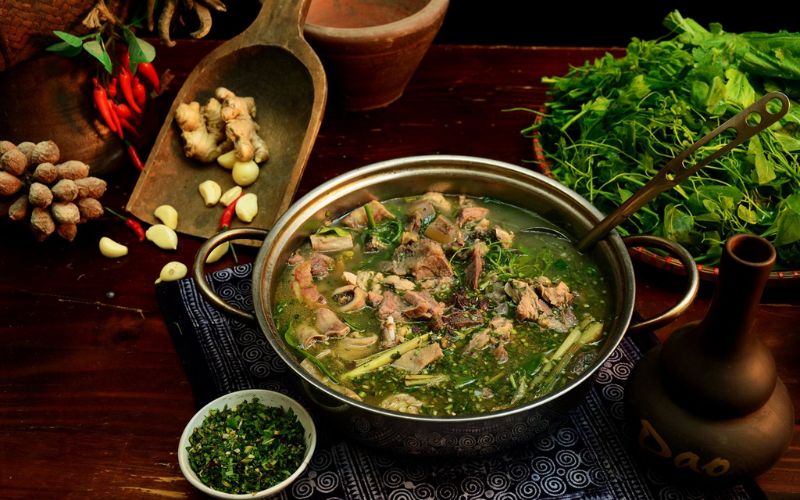
Thang Co
A rustic dish has a special allure; it is a specialty of mountainous areas’ cuisine and attracts a lot of tourists.
The time in between chilly spells is warmed by the perfume of spices like cardamom, star anise, cinnamon bark, walnuts, lemongrass, and even ginger blending with the fatty flavor of beef. This dish’s primary components include cleaned cattle or horse intestines, meats, bones, seasonings, and aromatic herbs.
Banh cuon trung (steamed rice roll with egg)
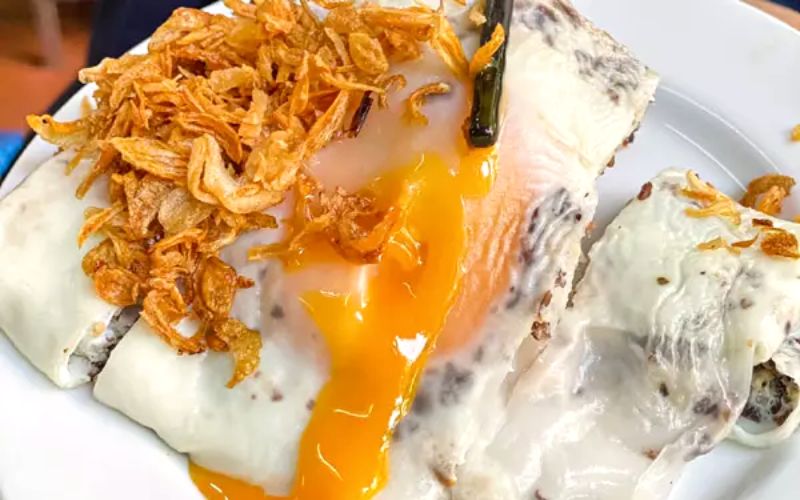
Banh cuon trung (steamed rice roll with egg)
Both residents and visitors like eating banh cuon. This cake seems very similar to a simple dish at first, but when you eat it, it tastes fantastic and mouth-watering from the outside to the inside. The cake is thin, fragrant, moist, and silky. When the cake has barely begun to ripen, simply beat the eggs for the banh cuon trung, a type of egg pancake, and then cover the pan with the lid for a bit to cook it thoroughly while keeping it smooth, moist, and free of cracks. For an outstanding flavor, the banh cuon is served with a sauce spiced with a little pepper, chili, and vinegar.
Chao Au tau (Au tau congee)
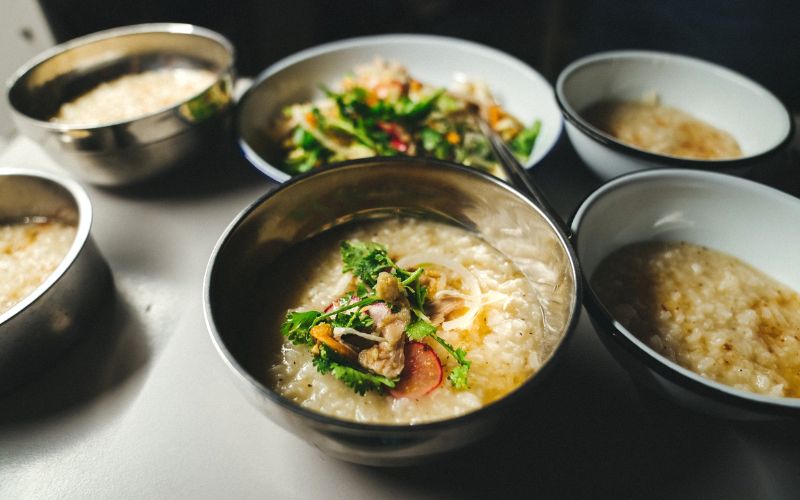
Au Tau congee
Wintertime in Ha Giang makes it simple to locate a modest eatery and eat Au tau soup. This dish is great because it combines the right ingredients, including minced beef, somewhat oily chestnuts, ham broth, large-grain sticky rice, and traditional field rice. You’ll want more soup after tasting this one!
Xoi ngu sac ( 5-color steamed sticky rice)
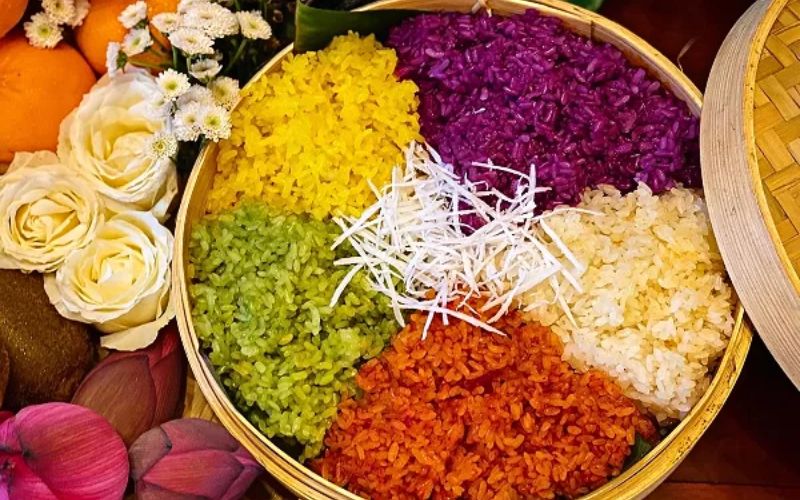
Xoi ngu sac
The five hues of this dish—white, red, green, purple, and yellow—represent the fundamental elements of the cosmos. It is made with sticky rice that the locals grow. Xoi ngu sac has developed into an essential dish in ethnic gatherings and festivals all year long due to its appealing shape and fragility.
Ha Giang festivals
Khau Vai Love Market Festival
If you’re fortunate enough to visit Meo Vac, Ha Giang in April, Khau Vai Love Market, also known as Phong Luu Market, is a must-see location. Taking place once a year on a hill in the commune of Khau Vai, this remarkable market is where people come together to discover love in a unique setting.
Spring Festival
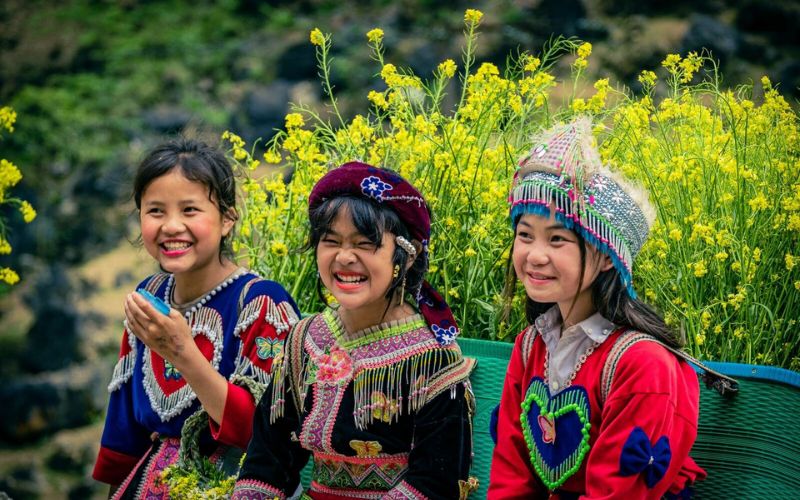
Children in Ha Giang, on a spring day
The Dao ethnic community prays for favorable weather and bountiful harvests as they commemorate the start of spring. The ethnic group then shows its acceptance of and adherence to the deity. In fact, the commencement of the harvest marks the start of the new year. On the day of the Lunar New Year, the festivity is held. This is a chance to dance, laugh, and take part in a variety of fun games.
Rain Festival
Every year, the Lo Lo ethnic community honors the rain and offers their livers to their gods in the hopes that they may fall on the Meo Vac fields for a better harvest. The dates of this festival are March 17–19. This provides a chance for people to interact while participating in the festival’s numerous ceremonies. Offerings are delivered to the home of a sorcerer or the local leader, including chickens, dogs, and rice. After that, a ceremony needs to be planned. All of the villagers congregate after the service has concluded to drink, eat, and dance.
All of your senses will be satisfied if you travel to this unique charming place. Do not hesitate to contact us and plan your first visit to Ha Giang!
Start planning your tailor-made tour with 1-1 help from our travel advisors.
- Plan your tailor - made trip with a local expert
- Book securely with money-back guarantee
- Travel stress-free with local 24/7 support

